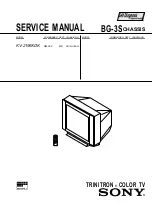
SYSTEM OPERATION
39
•
Use ground joint unions.
•
Install a drip leg to trap dirt and moisture before it can
enter the gas valve. The drip leg must be a minimum of
three inches long.
•
Install a 1/8" NPT pipe plug fitting, accessible for test
gage connection, immediately upstream of the gas supply
connection to the furnace.
•
Always use a back-up wrench when making the connec
-
tion to the gas valve to keep it from turning. The orienta
-
tion of the gas valve on the manifold must be maintained
as shipped from the factory. Maximum torque for the gas
valve connection is 375 in-lbs; excessive over-tightening
may damage the gas valve.
•
Install a manual shutoff valve between the gas meter and
unit within six feet of the unit. If a union is installed, the
union must be downstream of the manual shutoff valve,
between the shutoff valve and the furnace.
•
Tighten all joints securely.
•
Connection method must be in compliance with all local
and national codes. US: National Fuel Gas Code (NFGC)
NFPA 54-2015/ANSI Z223.1-2015 and the Installation
Standards, Warm Air Heating and Air Conditioning Sys
-
tems ANSI/NFPA 90B
In Canada, CANADA: National Standard of Canada,
Natural Gas and Propane Installation Code (NSCNGPIC)
CAN/CSA B149.1-15
•
Connect the furnace to the building piping by one of the
following methods:
–
Rigid metallic pipe and fittings.
–
Semi-rigid metallic tubing and metallic fittings.
Aluminum alloy tubing must not be used in exterior
locations. In order to seal the grommet cabinet
penetration, rigid pipe must be used to reach the
outside of the cabinet. A semi-rigid connector to the
gas piping may be used from there.
•
Use listed gas appliance connectors in accordance with
their instructions. Connectors must be fully in the same
room as the furnace.
•
Protect connectors and semirigid tubing against physical
and thermal damage when installed. Ensure aluminum-al
-
loy tubing and connectors are coated to protect against
external corrosion when in contact with masonry, plaster,
or insulation, or subjected to repeated wetting by liquids
such as water (except rain water), detergents, or sewage.
The gas piping may enter the left or right side of the furnace
cabinet. The installer must supply rigid pipe long enough to
reach the outside of the cabinet to seal the grommet cabinet
penetration. A semi-rigid connector to the gas piping can be
used outside the cabinet per local codes. ½” NPT pipe and
fittings are required. For models with an “L” shaped manifold,
a 4 ½ long nipple is required. For models with a hook shaped
manifold, a 2” long nipple is required.
A semi-rigid connector to the gas piping can be used outside
the cabinet per local codes. From the elbow, the length of pipe
and the fittings required will vary by the side chosen, location
of union and cabinet width. The union may be placed inside
or outside of the cabinet.
Alternate
Gas Line
Location
Gas Valve
Burners
Manual Shut Off Valve
(upstream from
ground joint
pipe union)
Drip Leg
Grommet
in Standard
Gas Line
Hole
*Ground
Joint
Pipe
Union
*Ground
Joint
Pipe
Union
*NOTE: Union may be inside furnace cabinet where allowed by local codes.
Manifold
Figure 37
Alternate
Gas Line
Location
Plug in
Alternate
Gas Line
Hole
Gas Valve
Burners
Manual Shut Off Valve
(upstream from ground joint pipe union)
Drip Leg
Grommet
in Standard
Gas Line
Hole
*Ground
Joint
Pipe Union
*Ground
Joint
Pipe Union
*NOTE: Union may be inside furnace cabinet where allowed by local codes.
Figure 38



































